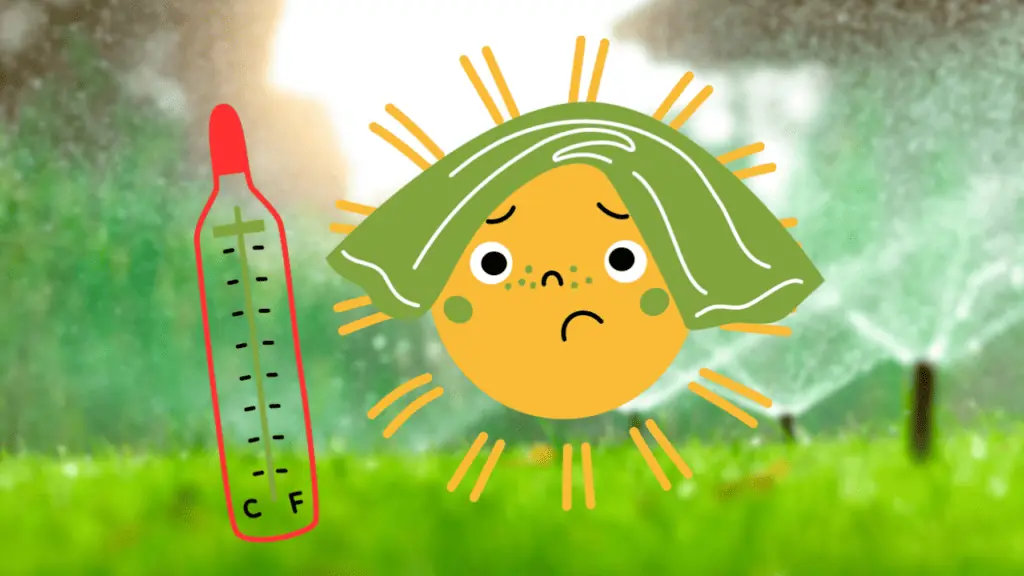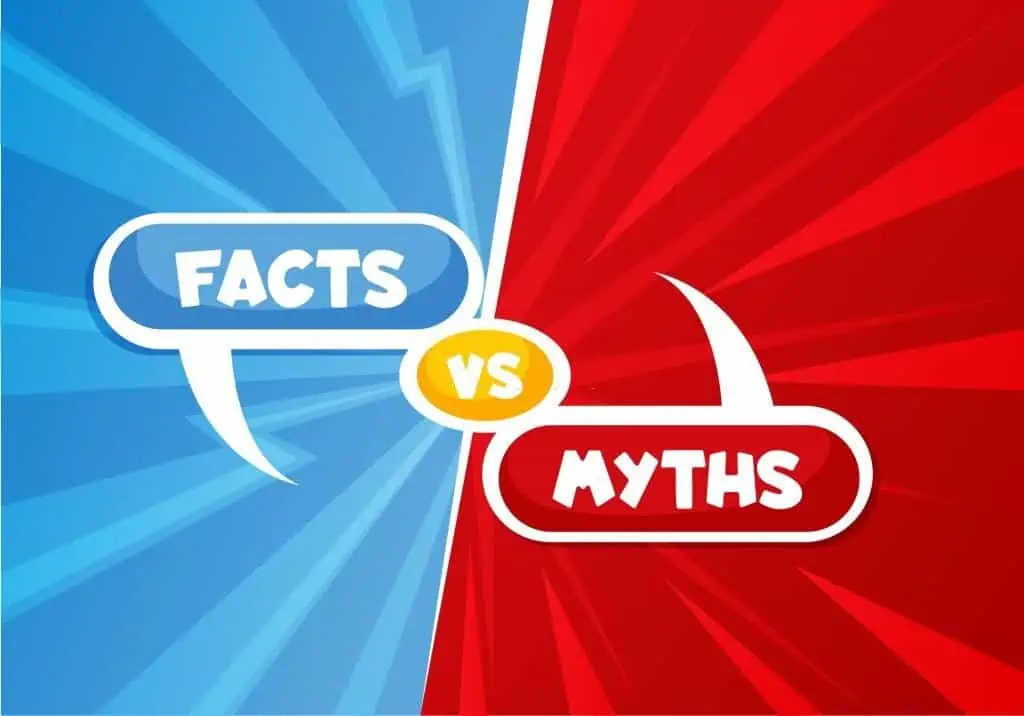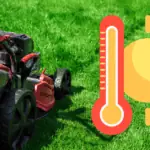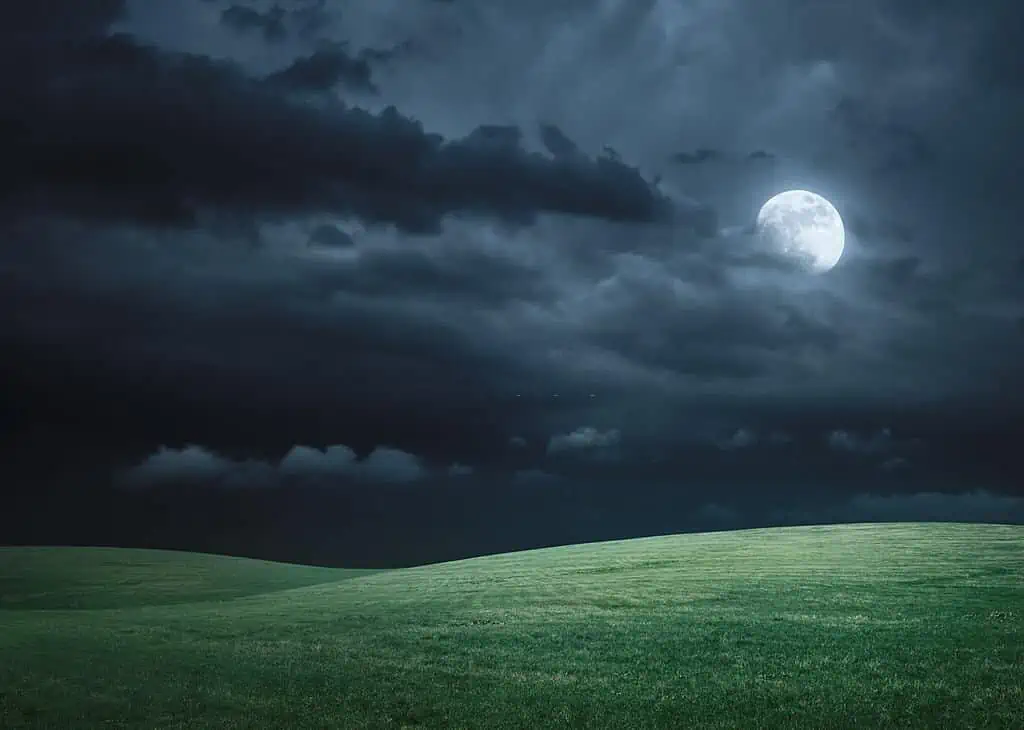One of the most significant parts of maintaining a healthy lawn is knowing the best times to water it. Whether you water in the morning or under the hot sun, your grass needs adequate watering without going overboard.
But what happens when the temperature is too hot to water grass? Will your grass improve soon enough, or will it get damaged in such weather conditions?
There are several factors to consider before arriving at a clear answer. This article covers those factors and answers your questions about the ideal time to water your lawn.
When is it Too Hot to Water Weather Grass?
Generally, the perfect temperature range for watering grass is between 15.6°C and 26.7°C. You can water your lawn and get a lot done during these temperatures. But when the temperatures rise above 29.4°C, it is considered too hot to water the grass, especially during the day.
Strong winds and low humidity can cause water to evaporate quickly at such temperatures, denying your lawn adequate moisture.
You notice brown spots, weak root systems, and fungal growth. It’s best not to water your lawn during the hottest parts of the day.
Factors to Consider when Watering in Hot Weather
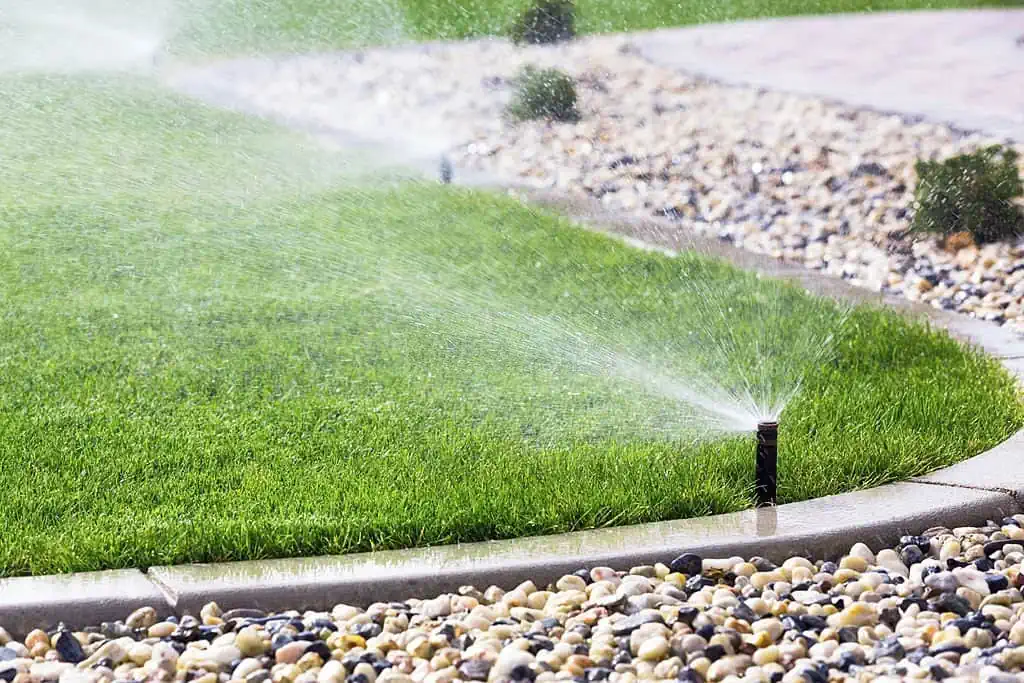
You’ve noted the time of day and the temperatures that come with it. But there are other factors to consider when watering your lawn in hot temperatures, including the following:
Watering Frequency and Duration
Not all grasses need the same watering frequency and duration. You should water your lawn frequently in hot weather to keep it healthy. Periods of extreme heat can leave your grass thirsty for water almost always.
However, overwatering in hot temperatures can lead to shallow root systems and wastewater. It is essential to get the balance right.
Soil Type
Soil type plays a considerable role. There are different types of soil, and they require different levels of watering. For example, sandy soils run off fast, while clay retains water for extended periods. This means sandy soils need frequent watering during hot temperatures, while clay is the opposite.
You can determine your soil type using a soil test kit or lab. Knowing your soil type will help you adjust your watering schedule accordingly.
Grass Type
What type of grass have you planted on your lawn? Chances are that you understand its water needs well, especially when the weather is scorching. For example, cool-season grasses like fescue and bluegrass require higher watering frequency. Conversely, warm-season grasses like St. Augustine and Bermuda grass can survive on low watering frequency.
Stress Signals
Another way to determine if the ground needs more water is to watch for signs of moisture stress in green grass. If the grass blades curl or turn to a dull grayish-green color, your lawn needs more water.
Further, the “footprint test” works wonders. You can use it to check if your lawn needs a few more inches of water. Step on the lawn and watch the reaction of the grass blades. Do they bounce back quickly or not? If they do not, your lawn needs more water.
Best Time to Water Your Grass
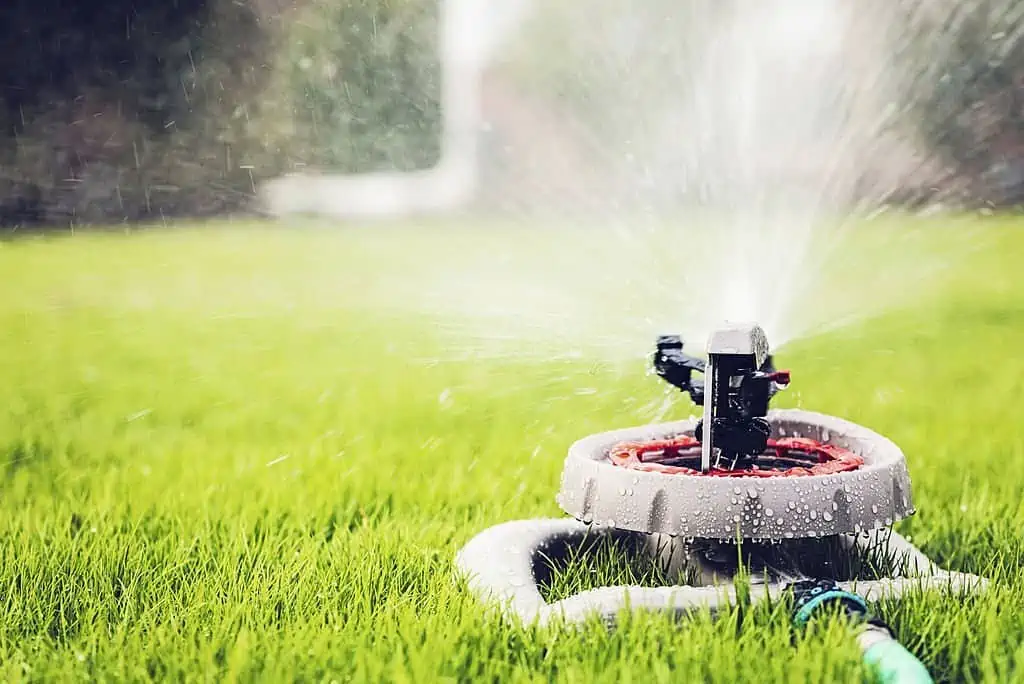
More than 26.7°C is considered too high to water your grass. So what is the best time to water? The ideal time to water your grass is early in the morning, especially between the hours between 6:00 am and 10:00 am.
When you water grass early in the morning, the grass blades begin to dry before evening, reducing the risks of fungal diseases and threats from pests.
Early in the evening is the next best time to water your grass. So if you skip the morning times, the hours between 4 and 6 pm are your next bet. During this time, your grass has enough time to dry before dark. Ideally, your grass shouldn’t stay wet all through the night.
While there’s nothing wrong with watering grass in the sun, it’s better early in the day and early in the evening.
Tips for Watering Your Lawn in Hot Temperatures
If you need more tips to help you water your lawn for the best results, regardless of the temperature, the following tips will help you:
- Soak up Your Lawn: Let the water flow heavily once or twice a week, giving your lawn some good soaking instead of just sprinkling it daily. It works like magic because the grassroots grow deep into the soil, making them more drought-resistant.
- Do Not Water on Windy Days: Windy days present some challenges, is it’s best to avoid them. Strong winds can blow water off course, limiting your lawn’s water needs. If the conditions are windy, wait for a day with less wind to water your grass.
- Avoid Overwatering Your Lawn: Overwatering your lawn is a no-no, as doing so can lead to shallow root systems. Also, it leaves your grass more susceptible to drought and diseases. You should ensure your lawn receives enough water, but never too much.
- Properly Adjust Sprinkler Heads: When your sprinkler heads are properly adjusted, your lawn gets watered properly, with every blade having a feel of the water. Also, you’ll do well to avoid watering the sidewalk, driveway, and other areas that could lead to wasting water.
- Use a Rain Gauge: Use a rain gauge if you’re worried about overwatering your lawn or poorly adjusted sprinklers. It will help you determine how much rain your lawn is receiving. That way, you’ll know when to water the lawn or skip a watering session.
Conclusion
Figuring out when it’s too hot to water grass is essential. At over 26.7°C or on serious summer days, you should leave your lawn alone because watering it could lead to terrible aftereffects. Even during the heat period, your lawn can stay healthy. However, it would help if you only watered early in the morning or early in the evening.
Your soil and grass can get stressed when the temperature outside gets heated. Also, watering at this time will see much of the water disappear through evaporation.
Know your soil and grass type and water according to specifications. Now that you know this, your grass can stay green, lush, and healthy in hot temperatures.
